The entrepreneurial landscape across North America is evolving rapidly, creating unprecedented opportunities for innovative business ventures. From sustainability-focused startups to AI-powered solutions, the market is ripe for entrepreneurs who can identify emerging trends and capitalize on changing consumer behaviors. Whether you’re looking to launch a side hustle with minimal investment or scale a tech-driven enterprise, North America offers fertile ground for business growth in 2026.
This comprehensive guide explores 25 promising business ideas tailored to the North American market, complete with insights on startup costs, scalability potential, and real-world success stories. We’ll highlight low-barrier entry points, tech-driven models, and niche markets with significant growth potential to help you find the perfect business opportunity aligned with your skills, interests, and financial resources.
Emerging Business Trends in North America for 2026
Before diving into specific business ideas, it’s essential to understand the broader trends shaping the North American market in 2026. These trends not only influence consumer behavior but also create new business opportunities across various sectors.
Stay Ahead of Business Trends
Get our free North American Market Trends Report with quarterly updates on emerging opportunities and consumer behavior shifts.
5 Low-Cost Business Ideas Under $5,000
Limited startup capital doesn’t mean limited opportunity. These five business ideas can be launched with minimal investment while offering significant growth potential in the North American market.
1. Social Media Management Service
With businesses of all sizes recognizing the importance of social media presence, demand for skilled social media managers continues to grow. This service-based business requires minimal startup costs—primarily a computer, reliable internet connection, and social media management tools.
Startup costs: $1,000-$2,500 for professional software subscriptions, basic branding, and website setup.
Growth potential: Start with small local businesses and scale to larger clients or specialize in specific industries like hospitality or professional services.

2. Handcrafted Product Business
The market for unique, handcrafted items continues to thrive across North America. Whether it’s custom jewelry, home décor, or artisanal food products, consumers are willing to pay premium prices for quality handmade goods with compelling stories.
Startup costs: $1,500-$4,000 for initial materials, basic equipment, packaging, and online store setup.
Growth potential: Begin with local markets and e-commerce platforms, then expand to wholesale relationships with boutique retailers.

3. Virtual Assistant Service
As businesses seek flexible support without the overhead of full-time employees, virtual assistants are in high demand. Services can range from administrative tasks to specialized support in areas like customer service, bookkeeping, or technical assistance.
Startup costs: $500-$2,000 for professional software, website development, and basic marketing materials.
Growth potential: Begin as a solo operator and scale by developing a team of specialized assistants to serve more clients.

4. Online Tutoring or Coaching
Educational support services are thriving in the digital age. Whether you have expertise in academic subjects, test preparation, language skills, or professional development, online tutoring and coaching offer flexible business opportunities with minimal startup costs.
Startup costs: $1,000-$3,000 for video conferencing software, teaching materials, website development, and initial marketing.
Growth potential: Start with individual sessions and expand to group classes, recorded courses, or specialized programs for corporate clients.

5. Digital Product Creation
Digital products like templates, e-books, printables, and online courses offer excellent profit margins with minimal ongoing costs. Once created, these products can generate passive income while you focus on marketing and developing new offerings.
Startup costs: $2,000-$4,500 for design software, website hosting with e-commerce capabilities, and initial marketing efforts.
Growth potential: Begin with a small collection of products and expand your catalog based on customer feedback and market demand.
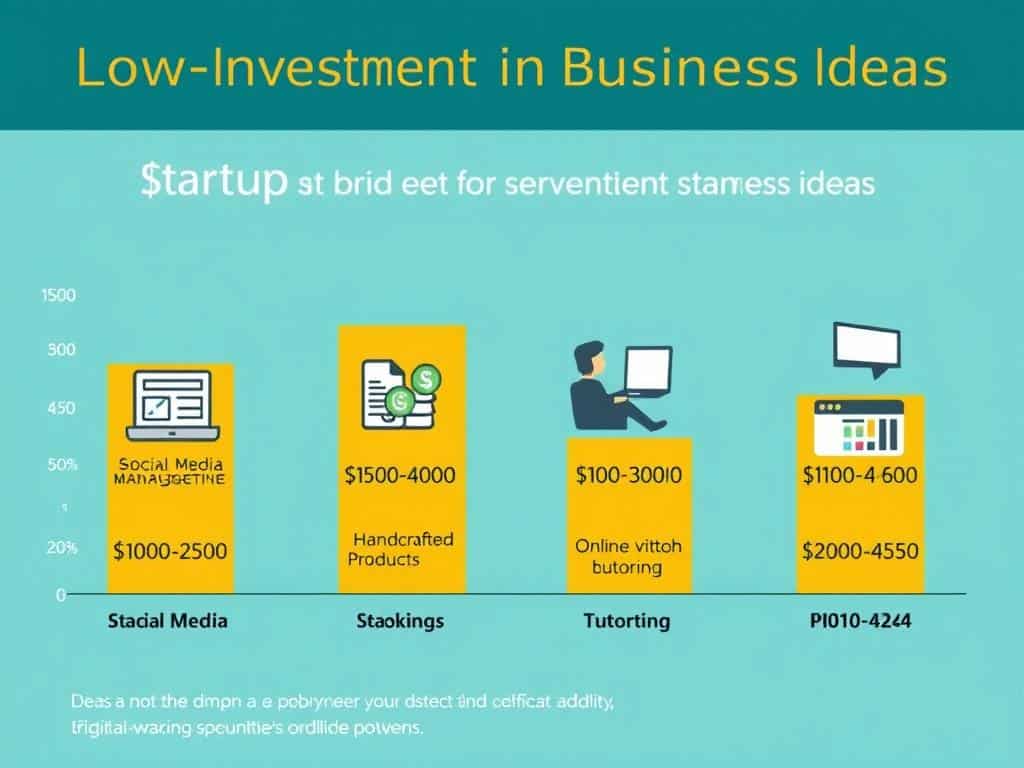
Startup Cost Comparison
When evaluating low-cost business ideas, it’s important to consider not just the initial investment but also the potential return and scalability. The chart above compares the startup costs for our recommended low-investment business opportunities.
While Virtual Assistant services have the lowest entry point, Digital Products may offer better long-term passive income potential despite slightly higher initial costs.
3 Tech-Driven Business Models with High Growth Potential

Technology continues to reshape the business landscape across North America, creating opportunities for entrepreneurs who can leverage digital innovations to solve problems and meet evolving consumer needs. These three tech-driven business models show particular promise in 2026.
1. AI-Powered Elder Care Platforms
With North America’s aging population, there’s growing demand for solutions that help seniors maintain independence while providing peace of mind to family members. AI-powered elder care platforms combine hardware and software to create comprehensive monitoring and support systems.
Key Components:
Real-World Example:
Toronto-based CareAI has developed a platform that uses non-invasive sensors and machine learning to monitor seniors’ daily activities. The system can detect changes in routine that might indicate health issues and automatically alerts designated caregivers. With minimal hardware installation and a subscription-based model, CareAI has grown to serve over 5,000 households across Canada and the northern United States.
2. Hyper-Local EV Charging Networks
As electric vehicle adoption accelerates across North America, charging infrastructure remains a critical bottleneck. While major networks focus on highways and commercial centers, there’s a growing opportunity for entrepreneurs to develop hyper-local charging solutions for residential areas, small businesses, and underserved communities.
Business Model Components:
Real-World Example:
ChargeMate, a startup from Austin, Texas, has created a network of over 200 neighborhood charging stations by partnering with apartment complexes, small businesses, and community centers. Their model includes revenue-sharing with property owners and a subscription option for regular users. The company has expanded to 12 cities across Texas and the Southwest, with plans to enter the California market in 2026.
3. AR/VR Training Platforms for Specialized Industries
Augmented and virtual reality technologies are transforming professional training across industries like healthcare, manufacturing, and emergency services. These immersive platforms reduce training costs, improve knowledge retention, and allow for safe practice of high-risk procedures.
Market Opportunities:
Real-World Example:
Montreal-based ImmerseTech has developed VR training programs for medical professionals that simulate surgical procedures and emergency scenarios. Their platform allows healthcare institutions to create custom training modules specific to their equipment and protocols. After launching in 2021, ImmerseTech has partnered with 15 medical schools and 30 hospitals across Canada and the northeastern United States, reducing training costs by an average of 40% while improving performance metrics.
| Tech Business Model | Estimated Startup Cost | Time to Market | Scalability Potential | Key Success Factors |
| AI-Powered Elder Care | $150,000 – $300,000 | 12-18 months | High | Privacy protection, reliability, intuitive interface |
| Hyper-Local EV Charging | $75,000 – $200,000 | 6-12 months | Medium-High | Location partnerships, user-friendly payment system |
| AR/VR Training Platforms | $100,000 – $250,000 | 9-15 months | Very High | Industry expertise, content quality, hardware partnerships |
Ready to Launch Your Tech Venture?
Get our comprehensive Tech Startup Roadmap with funding sources, development milestones, and market entry strategies specific to North America.
2 Niche Markets with Exceptional Growth Potential

While broad market trends create obvious opportunities, some of the most profitable businesses emerge from carefully identified niche markets. These specialized segments often have passionate customers, less competition, and higher profit margins. Here are two niche markets showing exceptional promise in North America for 2026.
1. Sustainable Pet Products and Services
The intersection of pet ownership and environmental consciousness has created a rapidly growing market for sustainable pet products and services. With over 65% of North American households owning pets and increasing concern about environmental impact, this niche offers multiple entry points for entrepreneurs.
Business Opportunities:
Market Insights:
The sustainable pet product market is growing at 8-10% annually, significantly outpacing the overall pet industry’s 4-5% growth rate. Consumers in this niche demonstrate high brand loyalty and are willing to pay premium prices for products that align with their values. Urban centers in the Pacific Northwest, California, Colorado, and major Canadian cities show particularly strong demand.
2. Specialized Fitness Services for Seniors
As North America’s population ages, there’s growing recognition that traditional fitness offerings often don’t meet the needs of older adults. This has created opportunities for specialized fitness services that address the unique physical requirements, health concerns, and social preferences of seniors.
Business Opportunities:
Market Insights:
Adults over 65 represent the fastest-growing fitness demographic in North America, with participation increasing 34% since 2019. This market segment values personalized attention, safety considerations, and social connections in their fitness experiences. Retirement communities, suburban areas with aging populations, and winter destinations for “snowbirds” present particularly strong opportunities.
| Niche Market | Target Customer | Estimated Market Size | Annual Growth Rate | Entry Barriers | Profit Margin Potential |
| Sustainable Pet Products | Environmentally conscious pet owners, 25-45 | $4.8 billion (North America) | 8-10% | Medium | 35-45% |
| Senior Fitness Services | Adults 65+, active retirees | $3.2 billion (North America) | 12-15% | Medium-Low | 40-50% |
15 More Innovative Business Ideas for North America
Beyond our featured categories, here are 15 additional innovative business ideas with strong potential in the North American market. Each represents an opportunity to meet evolving consumer needs or leverage emerging technologies.
6. Microgreens Urban Farming

Establish urban farming operations specializing in microgreens for local restaurants, markets, and direct-to-consumer subscriptions. These nutrient-dense crops can be grown in small spaces with quick harvest cycles, making them ideal for urban environments across North America.
7. Upcycled Furniture Business

Create unique furniture pieces by upcycling discarded materials and vintage items. This business model appeals to sustainability-minded consumers and the growing interest in one-of-a-kind home furnishings with character and environmental benefits.
8. Drone Delivery Service

Develop specialized drone delivery services for niche applications like medical supplies, urgent documents, or last-mile delivery in areas with challenging geography. As regulations evolve, early movers in this space can establish valuable partnerships and expertise.
9. Virtual Reality Fitness Studio

Create immersive fitness experiences using virtual reality technology. This innovative approach combines gaming elements with effective workouts, appealing to tech-savvy consumers looking for engaging alternatives to traditional gym environments.
10. Personalized Nutrition Service

Offer customized nutrition plans based on individual health data, genetic information, and lifestyle factors. This service can include personalized meal planning, supplement recommendations, and ongoing coaching through a subscription model.
11. Corporate Wellness Platform
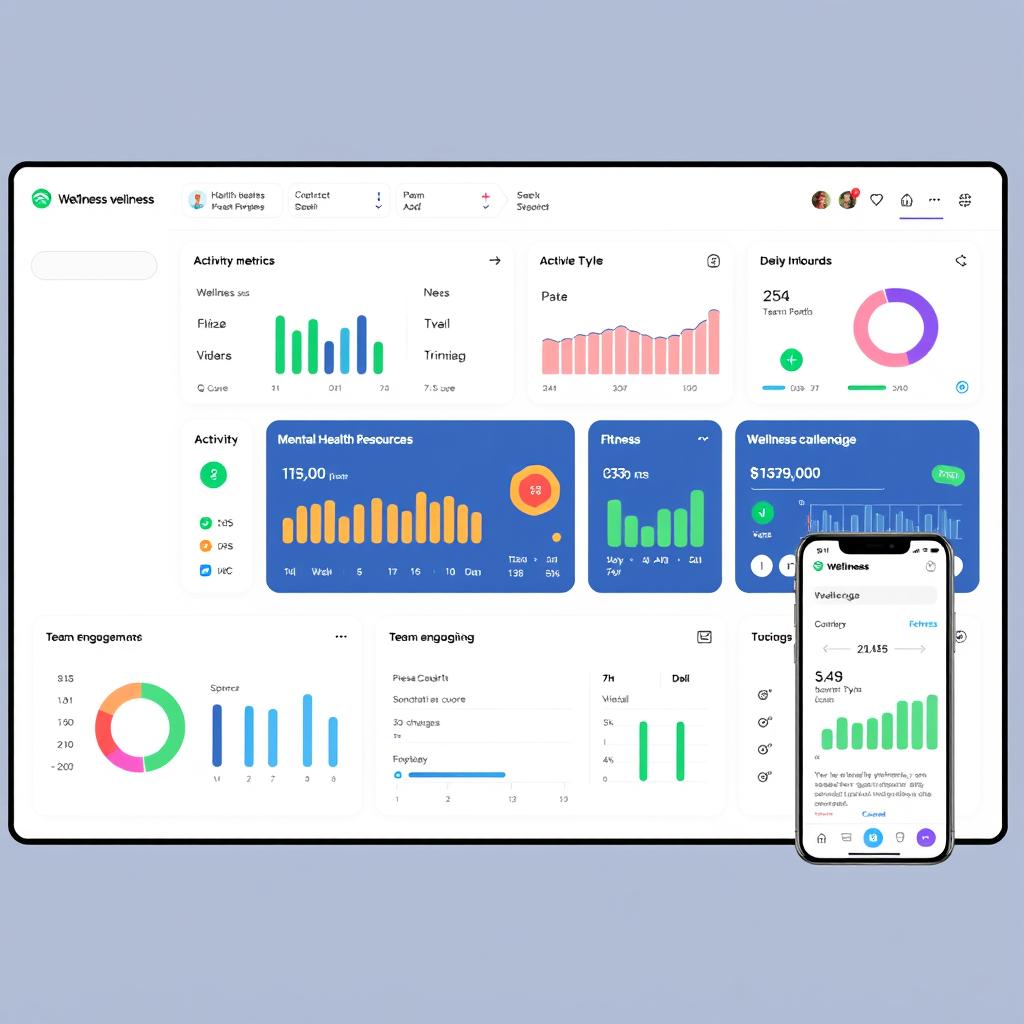
Develop comprehensive wellness solutions for businesses looking to support employee health and reduce healthcare costs. These platforms can integrate physical activity tracking, mental health resources, nutrition guidance, and incentive programs.
12. Smart Home Installation Service

Provide expert installation, integration, and troubleshooting for the growing array of smart home devices. This service bridges the gap between consumer interest in connected home technology and the technical knowledge required for optimal setup.
13. Sustainable Fashion Rental

Create a platform for renting high-quality, sustainable fashion items. This model appeals to environmentally conscious consumers who want variety in their wardrobes without the environmental impact of fast fashion.
14. Mobile Auto Detailing

Offer premium auto detailing services that come to the customer’s location. This convenience-focused business model eliminates the need for customers to wait at traditional car wash facilities and can command premium pricing.
15. Digital Estate Planning Service

Provide comprehensive digital estate planning services that help clients organize and secure their digital assets, accounts, and legacy wishes. This emerging need addresses the increasingly complex digital footprints people leave behind.
16. Vertical Farming Consultancy

Offer expertise in designing, implementing, and optimizing vertical farming operations for businesses and institutions. This specialized knowledge helps clients navigate the technical complexities of indoor agriculture while maximizing efficiency and yield.
17. 3D Printing Service Bureau
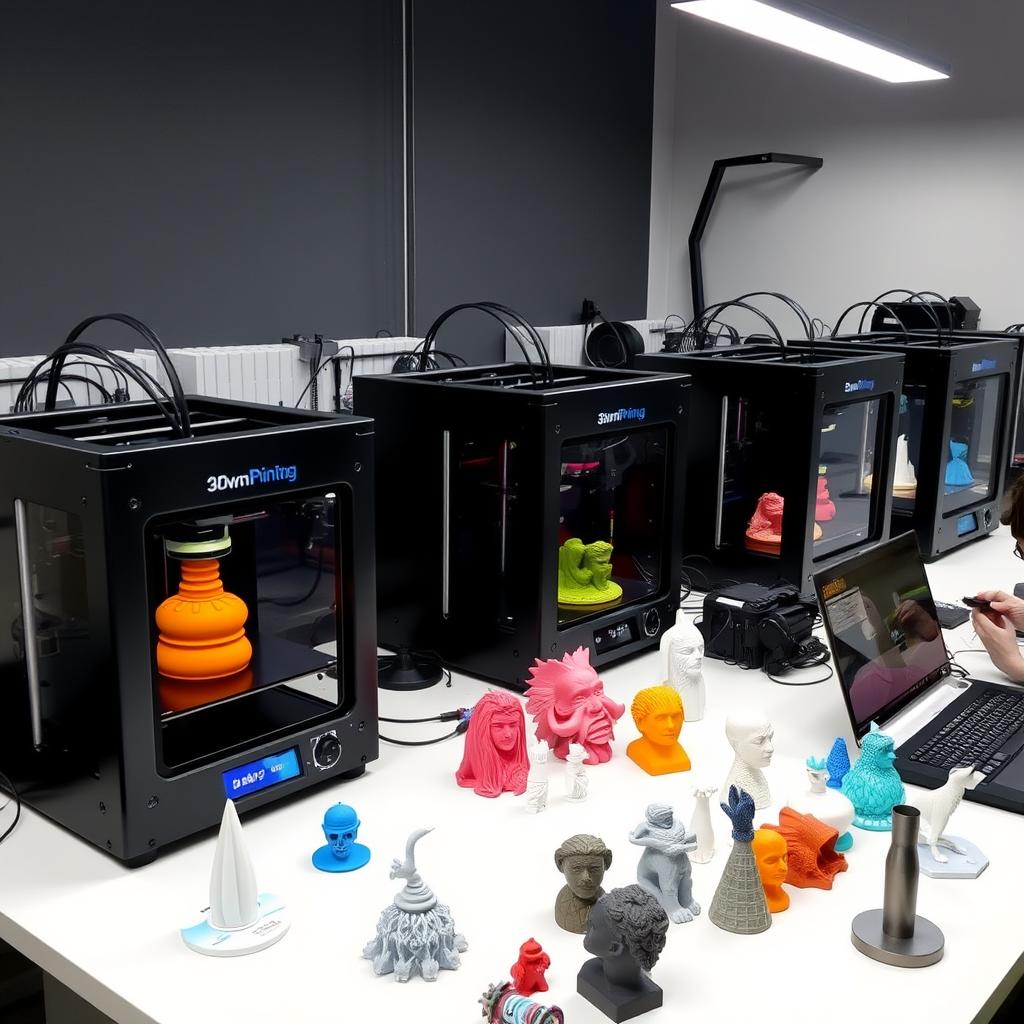
Provide specialized 3D printing services for prototyping, custom manufacturing, and on-demand production. This business can serve industries ranging from healthcare and education to product development and architecture.
18. E-Waste Recycling Service

Develop specialized services for collecting, processing, and properly recycling electronic waste. With growing awareness of e-waste issues and increasing regulations, this business addresses both environmental concerns and compliance needs.
19. Virtual Event Production

Offer comprehensive virtual event production services that help businesses create engaging online experiences. This includes technical production, platform management, audience engagement tools, and content creation.
20. Regenerative Agriculture Consulting

Provide expertise in regenerative farming practices that improve soil health, increase biodiversity, and enhance farm resilience. This service helps conventional farmers transition to more sustainable methods while potentially accessing premium markets.
Business Ideas Comparison: Startup Costs vs. Scalability
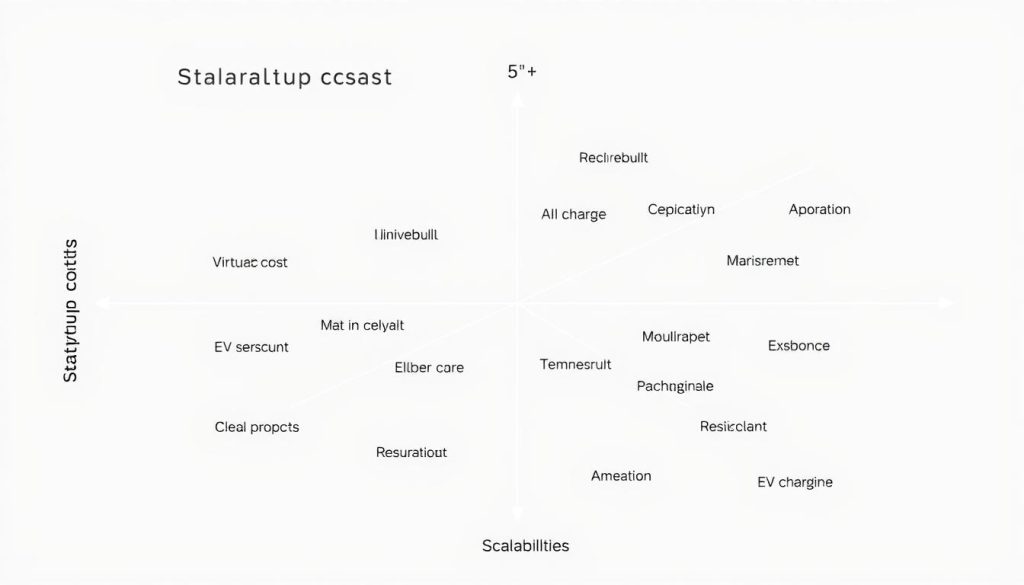
When evaluating business opportunities, it’s essential to consider both the initial investment required and the potential for growth. The following table compares our featured business ideas across these critical dimensions to help you identify the option that best matches your resources and ambitions.
| Business Idea | Startup Costs | Scalability Potential | Time to Profitability | Geographic Limitations |
| Social Media Management | $1,000-$2,500 | Medium-High | 1-3 months | None |
| Handcrafted Products | $1,500-$4,000 | Medium | 3-6 months | Shipping constraints |
| Virtual Assistant Service | $500-$2,000 | Medium | 1-2 months | None |
| Online Tutoring | $1,000-$3,000 | Medium-High | 2-4 months | Time zone considerations |
| Digital Product Creation | $2,000-$4,500 | Very High | 3-8 months | None |
| AI-Powered Elder Care | $150,000-$300,000 | High | 18-24 months | Urban centers initially |
| Hyper-Local EV Charging | $75,000-$200,000 | Medium-High | 12-18 months | EV adoption regions |
| AR/VR Training Platforms | $100,000-$250,000 | Very High | 12-24 months | None |
| Sustainable Pet Products | $25,000-$75,000 | High | 8-14 months | Urban/suburban focus |
| Senior Fitness Services | $15,000-$60,000 | Medium | 6-12 months | Retirement communities |
Find Your Perfect Business Match
Take our interactive Business Compatibility Quiz to discover which business ideas best match your skills, interests, and resources.
Key Considerations for Launching a Business in North America
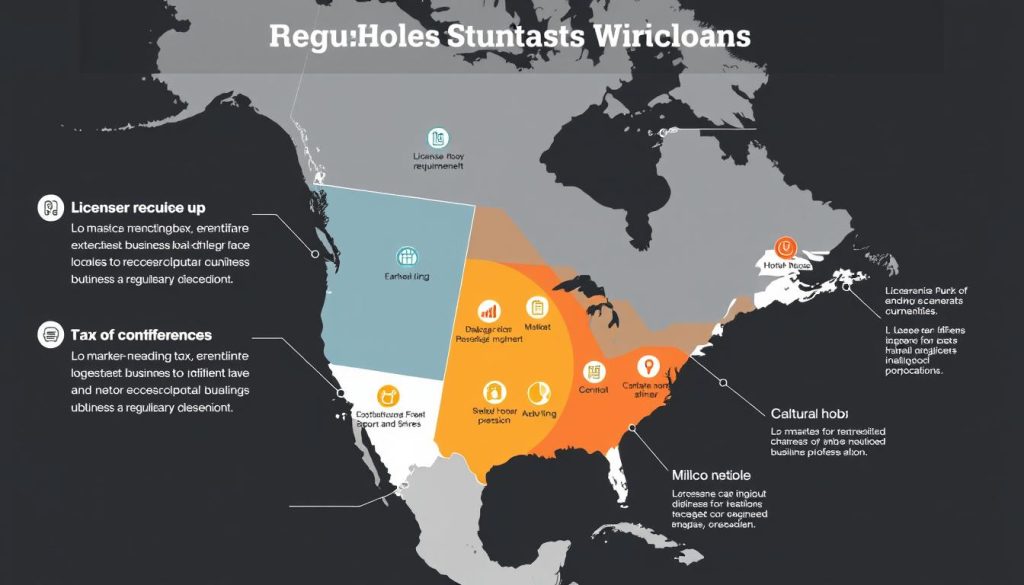
Launching a business in North America requires navigating various regulatory, cultural, and market considerations. Understanding these factors is essential for developing an effective business strategy and avoiding costly mistakes.
Licensing and Regulatory Requirements
United States:
Canada:
Mexico:
Cultural and Market Differences
Market Opportunities
- The United States offers the largest consumer market with high purchasing power and early technology adoption
- Canada provides strong infrastructure, highly educated workforce, and universal healthcare that reduces employer costs
- Mexico offers competitive manufacturing costs, growing middle class, and strategic location for North American trade
- Cross-border e-commerce creates opportunities to reach customers throughout the region
Cultural Considerations
- Business communication styles vary significantly between countries (direct vs. relationship-based)
- Consumer preferences and brand perceptions differ across regions
- Marketing materials may require adaptation beyond simple translation
- Business negotiation practices and expectations vary by country
- Holiday schedules and business hours differ across the region
Tax Implications
Tax considerations are among the most complex aspects of operating a business in North America, particularly for ventures that operate across borders. Understanding the basic tax framework in each country can help you develop an efficient structure for your business.
| Country | Corporate Tax Structure | Sales Tax System | Key Deductions/Credits | International Considerations |
| United States | Federal corporate tax rate of 21%, plus state taxes ranging from 0-12% | No federal sales tax; state and local sales taxes vary (0-9.5%) | R&D credits, small business deductions, opportunity zones | Global taxation with foreign tax credits |
| Canada | Federal rate of 15% plus provincial rates (8-16%) | GST (5%) plus provincial sales taxes or harmonized HST | SR&ED tax credits, manufacturing deductions | Territorial system with exemptions for foreign affiliates |
| Mexico | Flat corporate rate of 30% | VAT (16% standard rate, 8% in border regions) | Maquiladora incentives, R&D credits | Territorial system with anti-avoidance rules |
Funding and Financial Considerations
Access to capital varies across North America, with different funding ecosystems and investor preferences in each country. Understanding these differences can help entrepreneurs identify the most appropriate funding sources for their business.
United States:
Canada:
Mexico:
Launching Your North American Business Venture
The North American market offers tremendous opportunities for entrepreneurs who can identify emerging trends and develop innovative solutions to meet evolving consumer and business needs. Whether you’re drawn to low-investment digital businesses, tech-driven ventures with high growth potential, or specialized niche markets, success depends on thorough planning, market understanding, and strategic execution.
As you evaluate these business ideas, consider not just the market potential but also how well each opportunity aligns with your skills, interests, and resources. The most successful businesses often emerge at the intersection of market demand and entrepreneur passion—where solving problems for customers also means doing work you find meaningful and engaging.
Remember that business landscapes evolve rapidly, particularly in technology-driven sectors. Stay informed about emerging trends, regulatory changes, and shifting consumer preferences to ensure your business remains relevant and competitive in the dynamic North American market.
Ready to Turn Your Business Idea into Reality?
Download our comprehensive North American Business Launch Toolkit with templates, checklists, and resources to guide you from concept to successful operation.
Frequently Asked Questions
What business can I start with ,000 or less in North America?
Several viable business options require minimal startup capital, including:
- Social media management services
- Virtual assistant business
- Online tutoring or coaching
- Digital product creation (templates, courses, etc.)
- Content creation and freelance writing
These businesses leverage your existing skills and digital tools, allowing you to start generating revenue with limited upfront investment. As you build your client base and reputation, you can reinvest profits to expand your service offerings and marketing reach.
How do business regulations differ between the US, Canada, and Mexico?
Each country has distinct regulatory frameworks:
- United States: Regulations vary significantly by state and local jurisdiction. Business structure, licensing, and tax requirements differ across locations, with some states offering more business-friendly environments than others.
- Canada: Features a more centralized regulatory system with provincial variations. Quebec has unique language requirements, and GST/HST systems vary by province.
- Mexico: Has a centralized federal system with specific requirements for foreign business owners, including immigration status considerations and federal registry requirements.
For businesses operating across borders, the USMCA (United States-Mexico-Canada Agreement) provides important frameworks for trade, intellectual property, and digital commerce.
Which tech-driven businesses have the highest growth potential in North America?
Several technology sectors show particularly strong growth trajectories:
- AI-powered solutions for healthcare, elder care, and business optimization
- Clean energy infrastructure including EV charging networks and renewable energy systems
- AR/VR applications for training, education, and specialized industries
- Fintech innovations particularly in payment processing and financial inclusion
- Sustainable technology addressing environmental challenges
The most successful tech ventures typically combine innovative technology with strong business models and clear paths to monetization. Focus on solving specific problems rather than developing technology for its own sake.
What are the tax implications of operating a business across North American borders?
Cross-border operations introduce several tax considerations:
- Permanent Establishment: Business activities in another country may create a taxable presence
- Transfer Pricing: Transactions between related entities must be at arm’s length
- Withholding Taxes: Payments across borders may be subject to withholding
- Value-Added and Sales Taxes: Different systems apply in each country
- Tax Treaties: Agreements between countries may provide relief from double taxation
Working with tax professionals who specialize in international business is highly recommended to ensure compliance and optimize your tax structure.
How can I validate my business idea before investing significant resources?
Several approaches can help validate your business concept:
- Market Research: Analyze existing competitors, market size, and growth trends
- Customer Interviews: Speak directly with potential customers about their needs and pain points
- Minimum Viable Product (MVP): Create a simplified version of your product/service to test market response
- Pre-sales: Offer early-bird pricing or crowdfunding to gauge interest before full launch
- Small-Scale Testing: Launch in a limited geographic area or with a specific customer segment
The goal is to gather real-world feedback and evidence of market demand before committing substantial resources to your business idea.
















